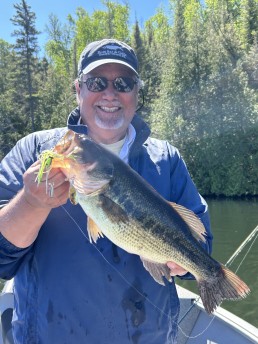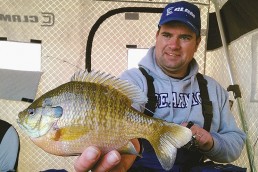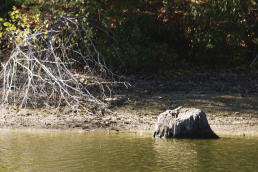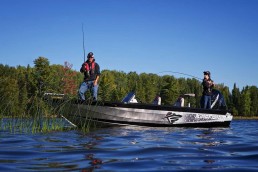Successful Turnover Tactics Cover Water to Catch Scattered Fish
SHARE THIS POST
The first rule of fishing the fall turnover period is… to avoid it if possible. In late summer, when previously stratified lakes begin cooling, their surface water sinks and disrupts the summer thermocline below. When this turbulent process strikes in earnest, anything goes. Water mixes, bottom debris floats to the surface, hydrogen sulfide gas bubbles up out of weed beds, and weed fragments litter the surface. You can see it, smell it and just plain sense the acquatic disarray. In response, fish groups and schools seemingly break up and scatter, a few here, a few there. Patterns are disrupted, and fishing typically becomes challenging for a week or two until the underwater environment settles into stable, early-fall conditions
So, Rule #1— the ABC principle—is to try to fish lakes that either A) haven’t entered turnover yet (typically deeper lakes), B) lakes that have already concluded the turnover process (shallow lakes are generally first to recover), or C) rivers that don’t form summer thermoclines. The principle is one of avoidance, and it’s a pretty good strategy for focusing on easier fishing during this unsettling time frame.
This strategy works pretty well if you live in a region with lots of lakes—large and small—along with rivers and streams. You have plenty of choices on where to fish on any given day. Choose wisely based on current conditions.
However… should you live in an area where there are few lakes, or perhaps one large lake or reservoir, your options for avoiding the fall turnover are pretty limited. At best, perhaps focus on areas with current that mitigate the process, like the upstream ends of impoundments.
Which begs the question: If you can’t avoid the fall turnover locally, or are unable to get away from it through travel to other areas (farther north or south where conditions are different), your best bet is following Rule #2: Covering water to contact scattered fish, hoping to run into a few biters here and there. It’s not a time to sit and strain known hotspots, trying to extract a bite or two from them. It’s more like a case of swiftly fishing as much potential area as possible, picking up a biter here and there along the way. Fish are likely milling and moving, and some will bite if you can cast, troll, drift or drag a lure past their noses.
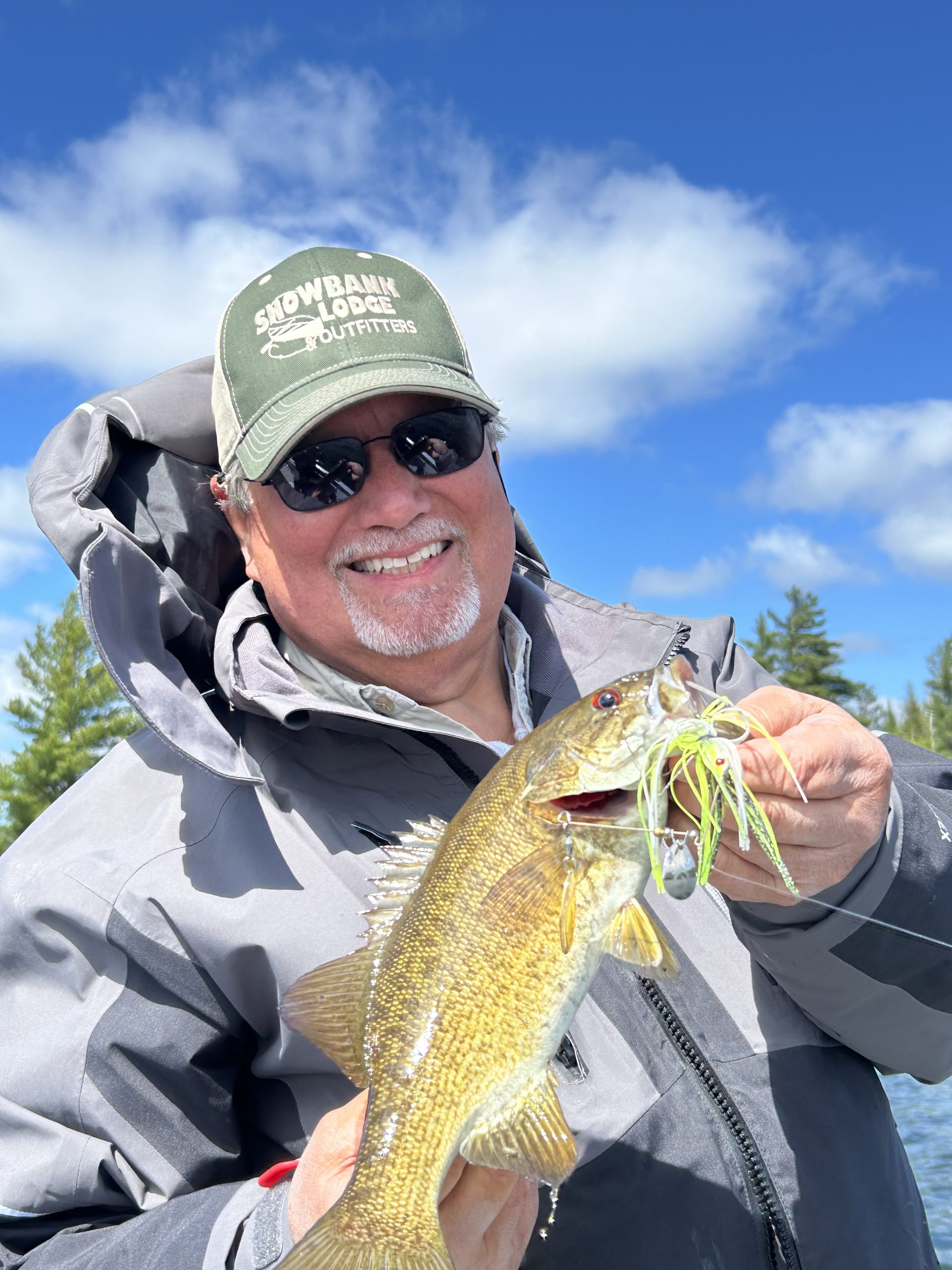
Are you enjoying this post?
You can be among the first to get the latest info on where to go, what to use and how to use it!
Which leads to Rule #3, although it’s more of a tendency than a hard-and-fast rule: On average, fish shallower, like across and atop flats, rather than meticulously hugging deep weed lines or drop-offs. Think fishing quickly and laterally, rather than slowly and vertically.
Under these conditions, spinnerbaits, shallow-diving crankbaits, straight-shaft spinners, chatterbaits, swimbaits, spoons and other lures that tend to run mostly straight, using fairly steady retrieves, tend to produce better than lures with exaggerated zigs and zags. Remember, you want to make more casts, or extended trolling or drifting passes, across weed flats, along shorelines, or atop sloping shoreline flats in reservoirs. At times, there is no better strategy than to simply get on a shoreline and go. In the process, you may notice a depth preference or a productive form of cover or bottom content. If so, stick with it. If not… just keep on straining water to assemble a catch.
Admittedly, to someone who prides themselves on being a hardcore structure fisherman, an accurate pitcher of pockets in shallow cover, or who prefers using some other precision technique, this is a hard pill to swallow. All your instincts tell you to double down using rifle-like tactics on small targets—when in fact what you really need is a shotgun approach to maximize coverage.
Not what you wanted to hear? Understood. You wanted a magic bullet. Instead, you need a pellet pattern to reach out and encounter pockets of scattered fish, roaming but still willing to eat if you find them.
That’s the ABCs, 123s of fishing the fall turnover.
MWO
SHARE THIS POST
Did you enjoy this post?
You can be among the first to get the latest info on where to go, what to use and how to use it!
Dave Csanda
Dave Csanda has enjoyed 40 years in the fishing communications industry at In-Fisherman, Angling Edge and now, as editor of MidWest Outdoors. He is an inductee of both the Minnesota and National Fresh Water Fishing Halls of Fame.
